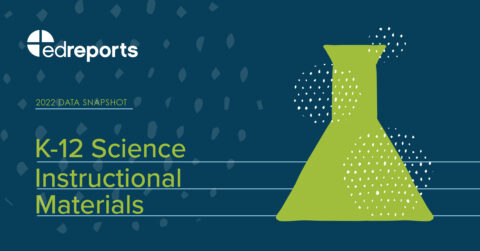High School Science: 4 Ways to Boost Student Access to High-Quality Materials
Advance student excellence in high school science by working with educators to use a coherent, comprehensive set of high-quality instructional materials.
Related Resources
article
Why I Review: I Have the Power to Shape Current and Future Instructional Materials
High school science educator Katie Miller shares why she’s committed to look beyond the needs of her school and toward the opportunity and charge to improve science education for all students, all teachers, and all schools.
article
Data Snapshot: K-12 Science Instructional Materials (2022)
Learn more about the availability and use of high quality K-12 science curriculum in this new report.
video
Watch: How to Help High School Science Teachers Get Better Curriculum
Science educator Shannon Wachowski discusses how EdReports’ reviews of high school science programs can support educators.


